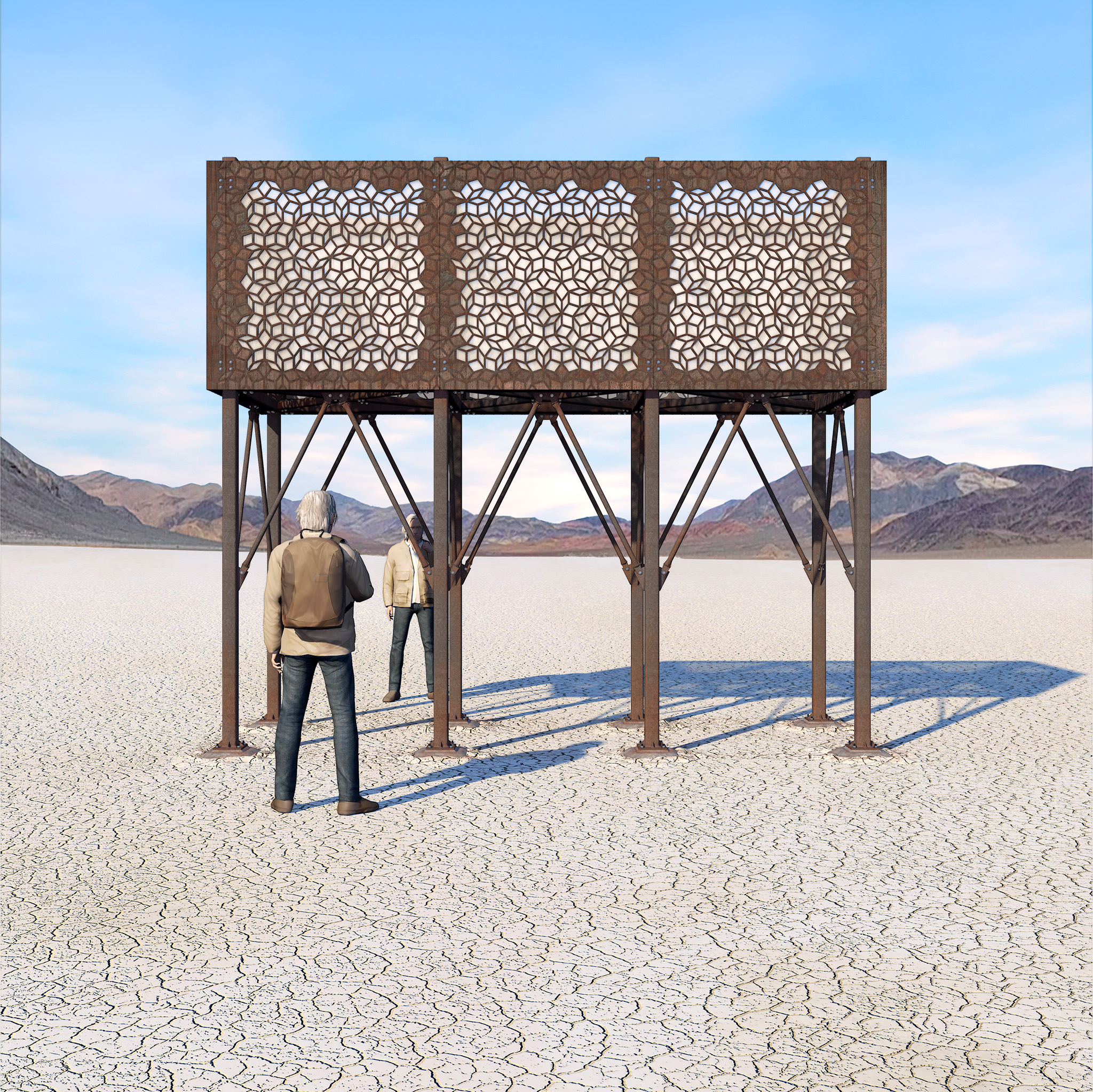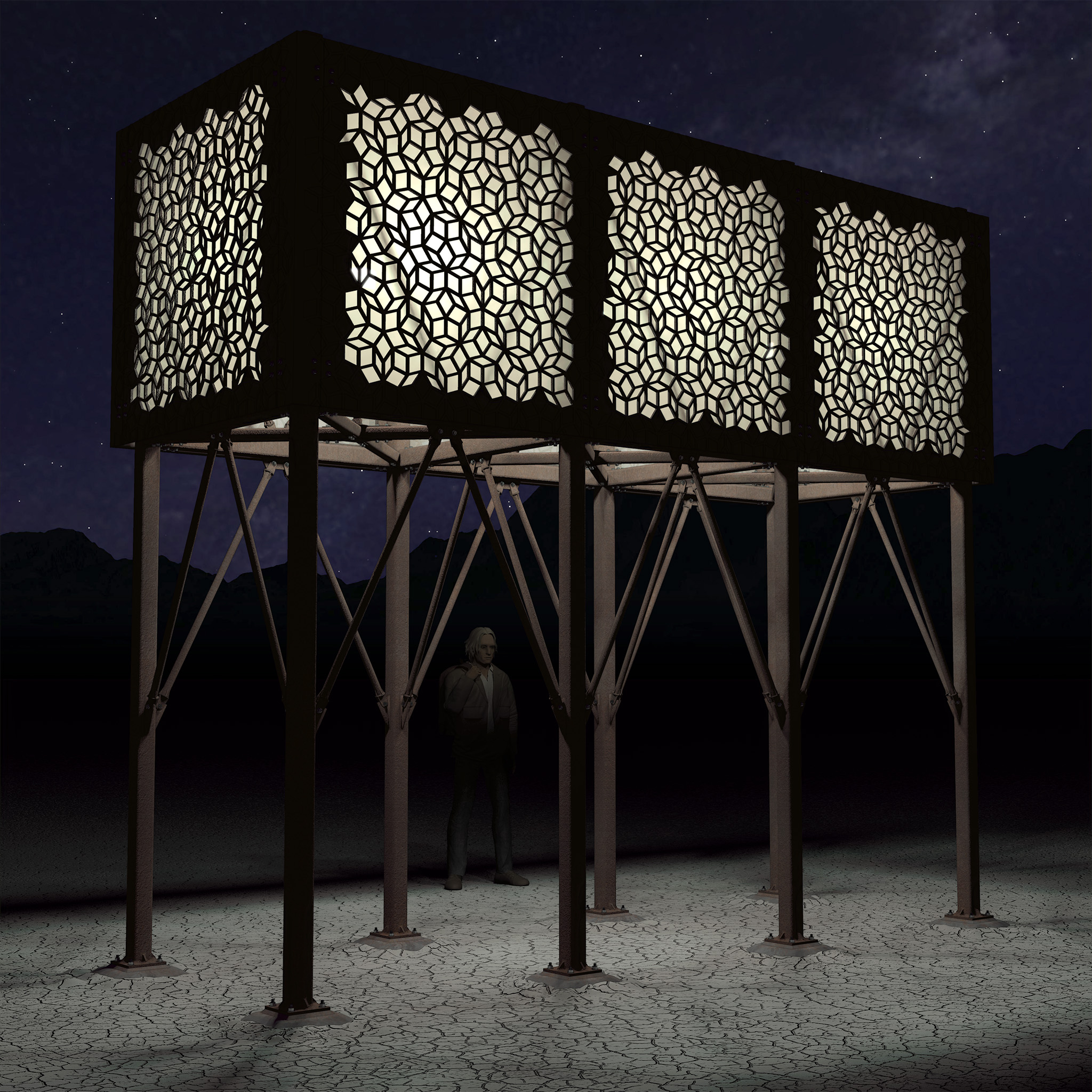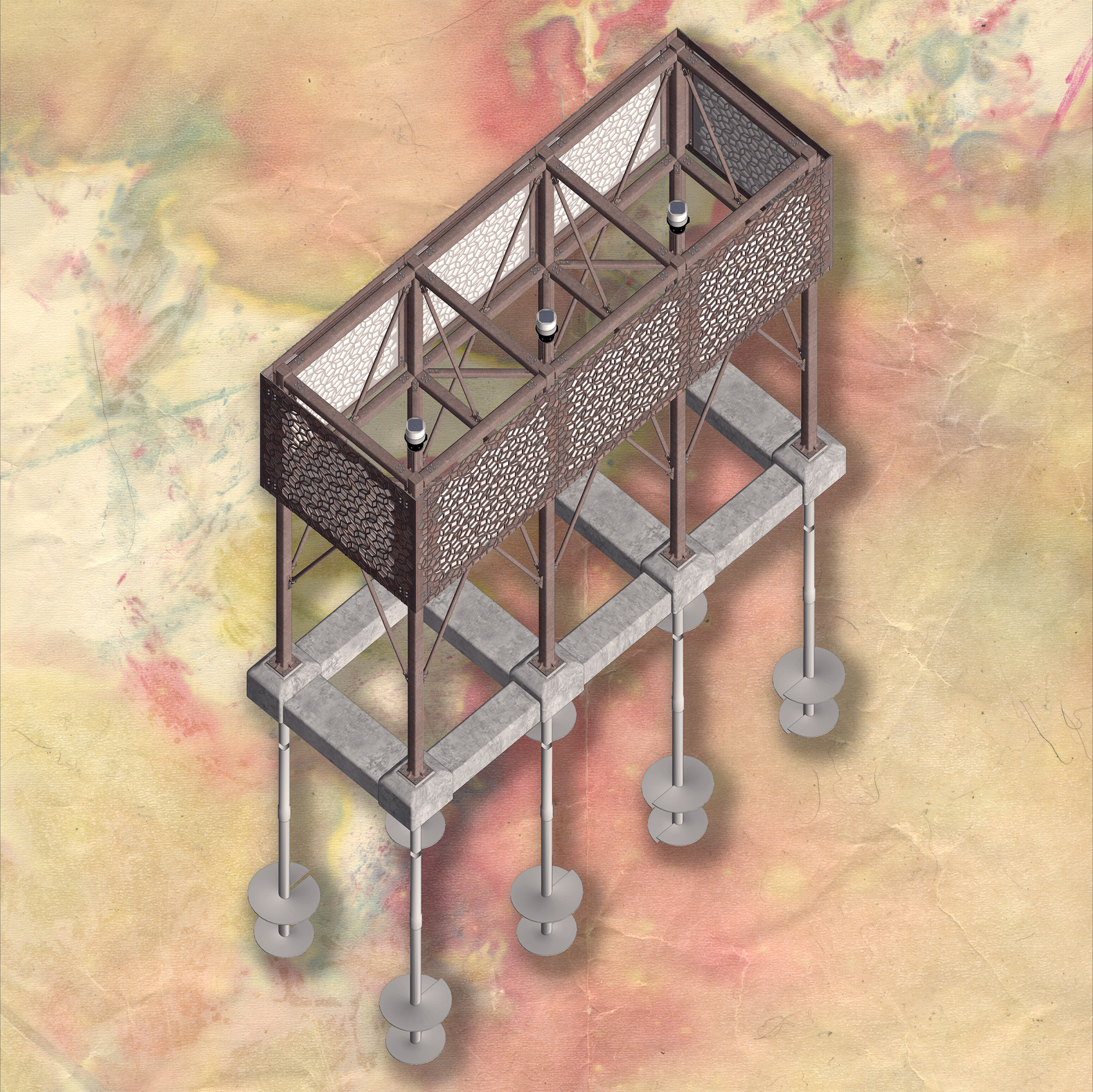


Running street battles, random police detention, riots, and tragedy superseded the COVID lockdown. From upper windows I saw brief flashes of light illuminating the towers of Downtown, followed by the sound of distant concussions. We kept the house sealed against the possibility of tear gas intrusion. I sat just inside the front doors and watched riffraff run past the house, carry things. I wondered how I would stop them if the looters tried to force their way in.
After the civil disturbance petered out, I found myself thinking about commemoration, about how to keep people from forgetting the horrible things that occurred all over the country and the horrible events that led to them (both of which, of course, seem to have been deliberately forgotten).
The final version of my concept is a simple tube-steel structure, an easily-extensible set of tension-braced pergola-like bays sitting on a basic concrete ground-beam system, itself if necessary bourn by easy-to-install “it’s a giant screw” helical pilings (I had personal experience with this foundation arrangement, utilizing it in the rehabilitation of my own house in 2014). The upper portion of each bay would consist of a screen composed of simple, corrosion-resistant mild-steel sheets, milled and perforated with whatever message or motif was required using basic CNC technology. The inside of each steel screen would be lined with translucent acrylic; in the center of the screened portion would be a bright self-contained, weather-sealed, solar-charged LED, the sort that is commonly used for inaccessible warning lights and in offshore buoys.
Anything could be milled into those steel screens — messages, names, prettiness, curses. Anything.
For my illustrative renderings, to emphasize the mutable application of the design, I decided that the steel screens should be milled with the “rational but irrational” Kite & Dart Penrose P2 pattern, an aperiodic tiling system composed of two different rhombus shapes that, for purposes of this discussion, can be assembled in a “pattern” that does not seem to be a “pattern” at all because it is never-repeating. This is the most popular of the aperiodic tiling systems developed by respected British mathematician, theoretical physicist, and cosmologist Sir Roger Penrose, building on certain theories of Johannes Kepler. Penrose discussed the systems in a series of publications beginning in1974; the tiling has applications outside of aesthetics in the study of material properties and quasicrystals.
In 2020, I posted these images and a description of the project on social media, which I had not yet abandoned. Entirely coincidentally, we must assume, that very same day Sir Roger Penrose was awarded the Nobel Prize in Physics.
Leave a Reply